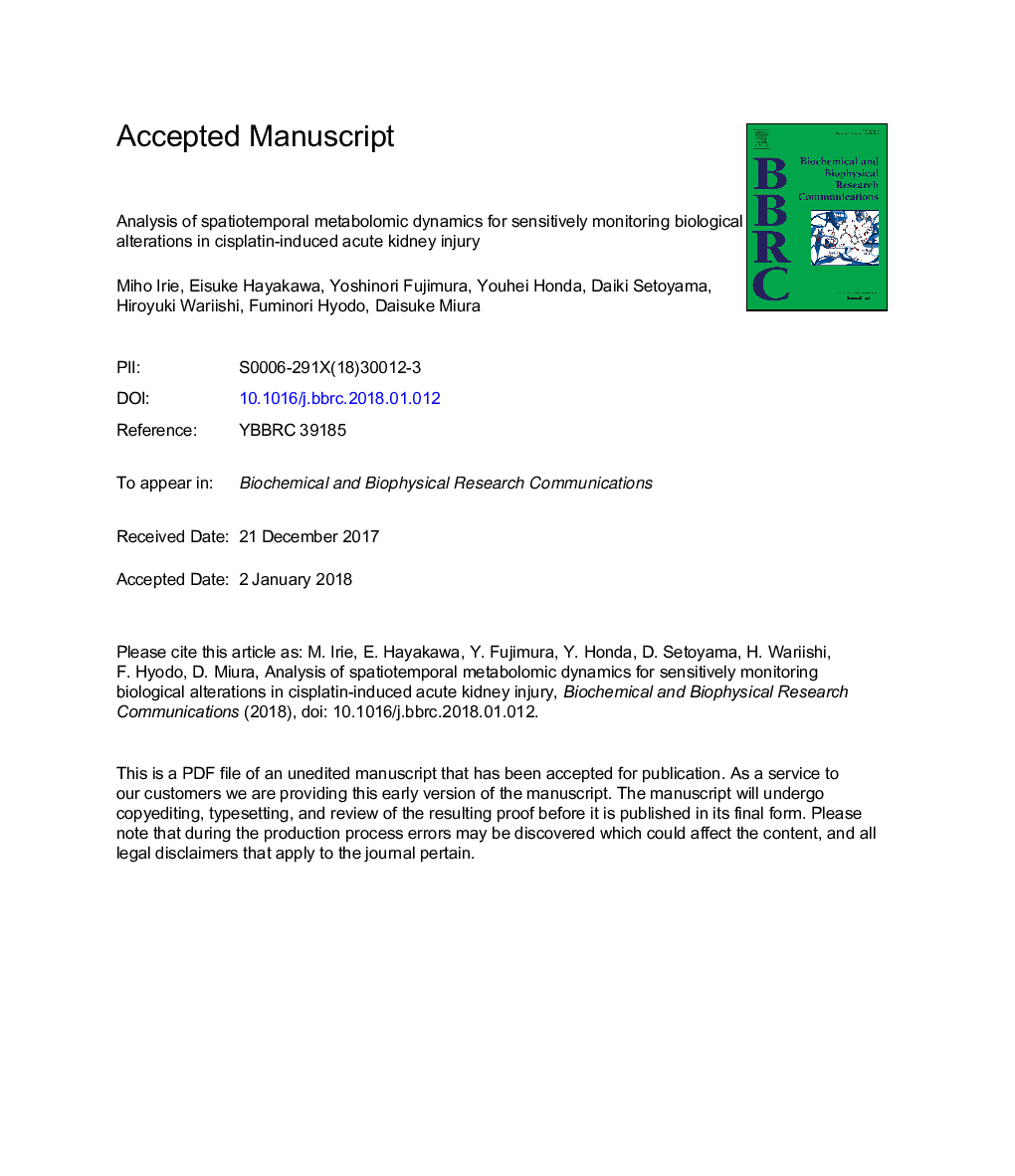| Article ID | Journal | Published Year | Pages | File Type |
|---|---|---|---|---|
| 8294841 | Biochemical and Biophysical Research Communications | 2018 | 26 Pages |
Abstract
Clinical application of the major anticancer drug, cisplatin, is limited by severe side effects, especially acute kidney injury (AKI) caused by nephrotoxicity. The detailed metabolic mechanism is still largely unknown. Here, we used an integrated technique combining mass spectrometry imaging (MSI) and liquid chromatography-mass spectrometry (LC-MS) to visualize the diverse spatiotemporal metabolic dynamics in the mouse kidney after cisplatin dosing. Biological responses to cisplatin was more sensitively detected within 24â¯h as a metabolic alteration, which is much earlier than possible with the conventional clinical chemistry method of blood urea nitrogen (BUN) measurement. Region-specific changes (e.g., medulla and cortex) in metabolites related to DNA damage and energy generation were observed over the 72-h exposure period. Therefore, this metabolomics approach may become a novel strategy for elucidating early renal responses to cisplatin, prior to the detection of kidney damage evaluated by conventional method.
Related Topics
Life Sciences
Biochemistry, Genetics and Molecular Biology
Biochemistry
Authors
Miho Irie, Eisuke Hayakawa, Yoshinori Fujimura, Youhei Honda, Daiki Setoyama, Hiroyuki Wariishi, Fuminori Hyodo, Daisuke Miura,
